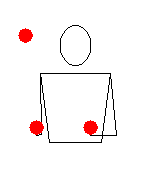I found this from the New York Times interesting not just because of the high levels of engagement that it led to, but also because readers were actively comparing the respective results, as well as the data they had used to reach their conclusions.
The idea of data never really coming to an end - once a conclusion is reached, the conclusion is scrutinised and new data around that produced - is almost overwhelming in it's implications for the lifecycle of news. Quite simply, data can evolve and move forward for as long as someone is prepared to scrutinise it I guess.
In my work, we have found when we run surveys online (particularly sports) readers want a very detailed breakdown of responses and numbers - they want all the detailed statistics that come out of a survey (ideally with visualisations of some form - even a basic bar chart) if it is to have value. It reminds me of what my old Maths exam papers used to say - SHOW YOUR WORK.
As the Times highlighted*:
So, not enough to just tell - you have to show how you got there too. Not exactly an earth-shattering conclusion, I know, but both examples made an impression on me. A lesson to carry forward with me, I think.
* Big hat-tip to Doreen Marchionni who first flagged the NY Times article and reader demands for information on her Journalism as a Conversation blog. She observes: "Online news audiences not only love to hear it but perceive such interactivity as contributing to a story’s credibility". I agree.
The idea of data never really coming to an end - once a conclusion is reached, the conclusion is scrutinised and new data around that produced - is almost overwhelming in it's implications for the lifecycle of news. Quite simply, data can evolve and move forward for as long as someone is prepared to scrutinise it I guess.
In my work, we have found when we run surveys online (particularly sports) readers want a very detailed breakdown of responses and numbers - they want all the detailed statistics that come out of a survey (ideally with visualisations of some form - even a basic bar chart) if it is to have value. It reminds me of what my old Maths exam papers used to say - SHOW YOUR WORK.
As the Times highlighted*:
..."many readers asked for a tabulation of the responses, and taken together, they offer a glimpse of specific preferences within two groups: those who far prefer spending cuts, and those who want to mix cuts with tax increases. The responses also point to a deep divide between those two sides, illustrating why a solution is difficult"...Some weeks ago a Liverpool Echo survey of LFC fans accidentally missed out on of the questions in the big results round-up. We had several stern comments from readers who wanted to know why a question was missing and what the results had been (not just the number of votes, but how many had voted, skipped the question etc). When we realised, and restored the missing information with an apology, we had more posts from readers marking their appreciation that they had been listened to and the data provided.
So, not enough to just tell - you have to show how you got there too. Not exactly an earth-shattering conclusion, I know, but both examples made an impression on me. A lesson to carry forward with me, I think.
* Big hat-tip to Doreen Marchionni who first flagged the NY Times article and reader demands for information on her Journalism as a Conversation blog. She observes: "Online news audiences not only love to hear it but perceive such interactivity as contributing to a story’s credibility". I agree.

